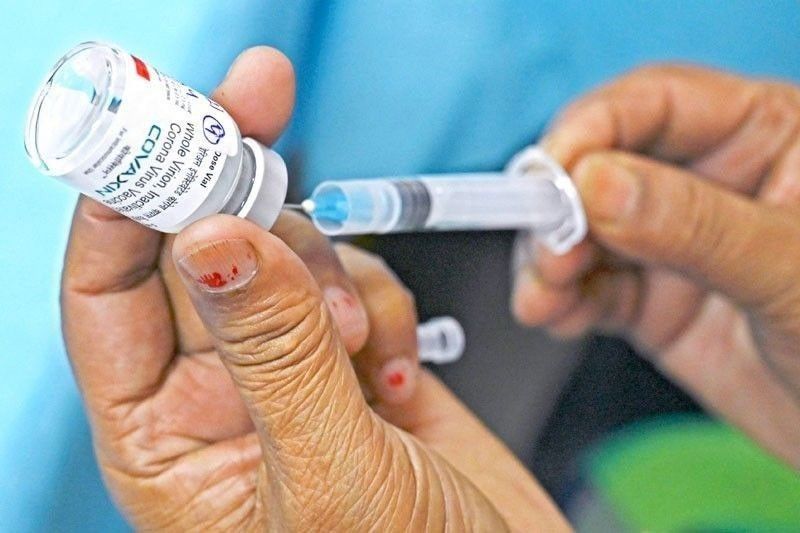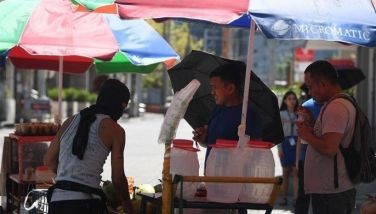COVID-19 surge possible if immunity of 50% jabbed wanes

MANILA, Philippines — If the immunity of half of the vaccinated population wanes, more Filipinos may end up with severe and critical cases of COVID-19, the Department of Health (DOH) said Thursday night.
“OK, we live with the virus, you get sick but you are mild because you are vaccinated. But when immunity wanes and we see more severe and critical cases, that is more problematic,” Health Undersecretary Maria Rosario Vergeire told One News’ “The Chiefs.”
Vergeire said her pronouncement was based on “assumptions” raised by the Australian Tuberculosis Modeling Network (AuTuMN) Team, which included the “waning immunity of the population.”
She added that having more COVID-19 patients in severe and critical condition is “more difficult.”
Data showed there are 51 million Filipinos eligible to get their booster shots after receiving their complete primary series of vaccination. Of the figure, only 14 million have received their booster doses.
She warned the immunity generated by the vaccines wanes after about four months.
“We have 37 to 38 million individuals who are eligible and have not received their boosters yet,” she maintained.
The DOH is cautioning the public that the emergence in the Philippines of the Omicron subvariant BA.2.12 is likely to push up the number of COVID-19 cases, especially as the campaign season goes full blast.
“As for the national situation, the probability of having increase in cases is really high because of the new variant and we see the crowding events where many are no longer observing the minimum public health standards,” she said.
She noted they expect to see more gatherings of people with the May 9 elections just around the corner.
Last Wednesday, the DOH announced the detection in the country of the first case of Omicron subvariant BA.2.12 in a 52-year-old Finnish woman who stayed in the Philippines from April 2 to 21.
The woman went to a university in Quezon City before conducting a seminar in Baguio City, where she developed symptoms and eventually tested positive for COVID-19.
She was detected to have the subvariant through genome sequencing.
She had 44 close contacts but none had exhibited COVID-19 symptoms. There would be no need to test the close contacts but they would be closely monitored, according to health officials.
“It is good to worry because we will be more aware and more cautious,” Vergeire said.
“But we don’t have to panic if we wear our mask properly, we are vaccinated. We don’t have to worry that we will have severe infection and get hospitalized,” she added.
She, however, pointed out that regionally, vaccination coverage is high but nationally, it is low at only 74.8 percent of the 67.3 million targeted individuals.
Manageable
But currently, Vergeire said there is no “significant” increase in cases over the past one to two months and cases are still “very manageable” – at 215 new infections per day.
“What would be most important, although there is a slight increase in cases in some areas, the health system capacity is manageable at less than 20 percent (COVID-19) bed utilization rate nationwide,” she added.
She stressed the country now has the “tools to fight off the virus,” citing the vaccines and medicines that are available.
In a separate report, the DOH noted an “incremental increase” in the reproduction number (Rt) of COVID-19 from 0.82 at the start of March to 1.03 last April 22. The trend, however, is “small and not sustained.”
“Moreover, it is important to note that the reproduction number is just one of the metrics that is used by the department to monitor and assess the COVID-19 situation in the country,” the DOH noted.
The department added such changes have not led to any sustained increases in admissions of COVID-19 cases.
The DOH also said that severe and critical contribution to admissions has likewise “remained constant.”
“We have been able to maintain low total and ICU bed utilization rates,” it added.
“Immunocompromised individuals should get their second boosters at the soonest available time to ensure maximum protection against severe and critical symptoms caused by the virus,” the DOH maintained.
The Philippine Genome Center (PGC) said the country’s first case of Omicron subvariant BA.2.12 could have gotten the virus abroad and not in the country.
According to PGC executive director Cynthia Saloma, it is possible that the Finnish woman who was sequenced with BA.2.12 was already carrying the virus when she arrived in the Philippines.
But the possibility of her getting infected locally or while on travel cannot be totally discounted, according to Saloma.
“We cannot completely remove that possibility but chances are she brought it in, particularly because the signature mutation of this variant is widely circulating in Europe and in North America,” she said at a public briefing.
Saloma added that while the woman manifested COVID-19 symptoms “somehow late,” her case still falls within the incubation period of three to 14 days.
She underscored that while BA.2.12 was first detected in Canada, it did not cause a surge of cases in the North American nation. Instead, the subvariant has been driving the rise in cases in Europe.
“It spread in Europe just because there’s an additional mutation, it depends probably on geography and probably immune situation of the population,” she said.
Saloma also revealed that Omicron is the “most dominant variant” in the Philippines, accounting for 95 percent of sequenced samples in March and April.
She pointed out that there “seems to be no onward transmission of BA.2.12 in the community.”
However, she said there could already be a local case of BA.2.12 in the country, but undetected.
“That is always a possibility because we are only sequencing a small portion, only those sent to us. But we are always on the watch out,” she added.
Saloma maintained that BA.2.12 is “not really a cause for alarm” because it is BA.2.3 that is circulating mostly in the country.
- Latest
- Trending




























